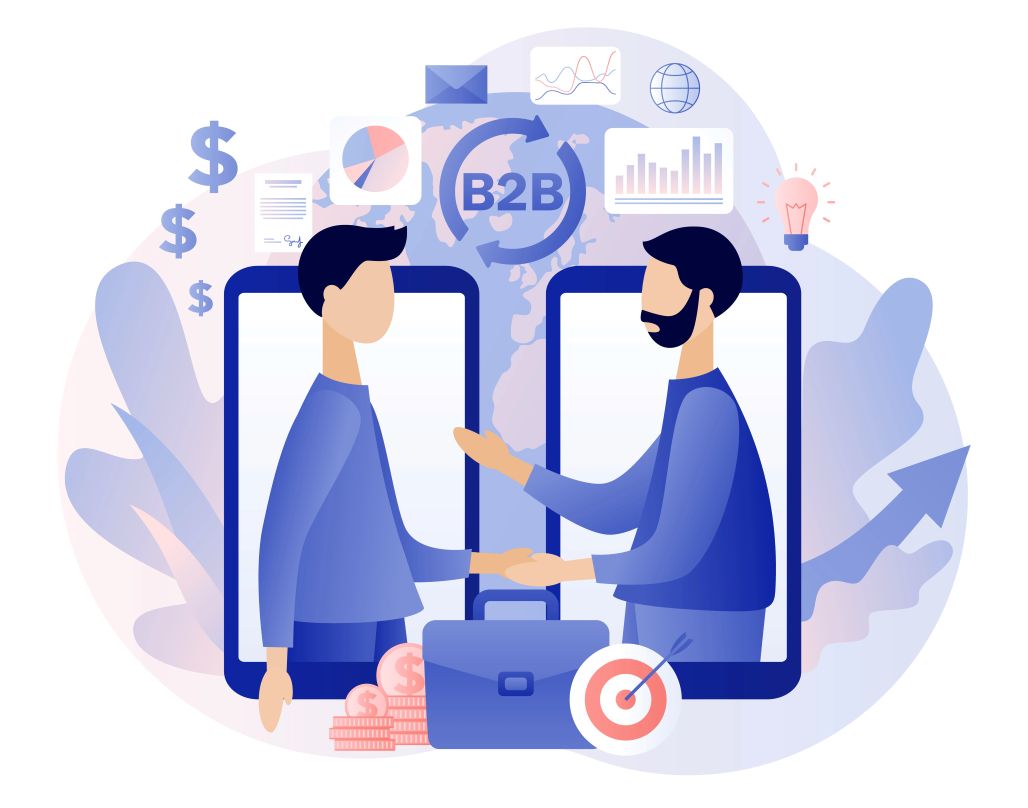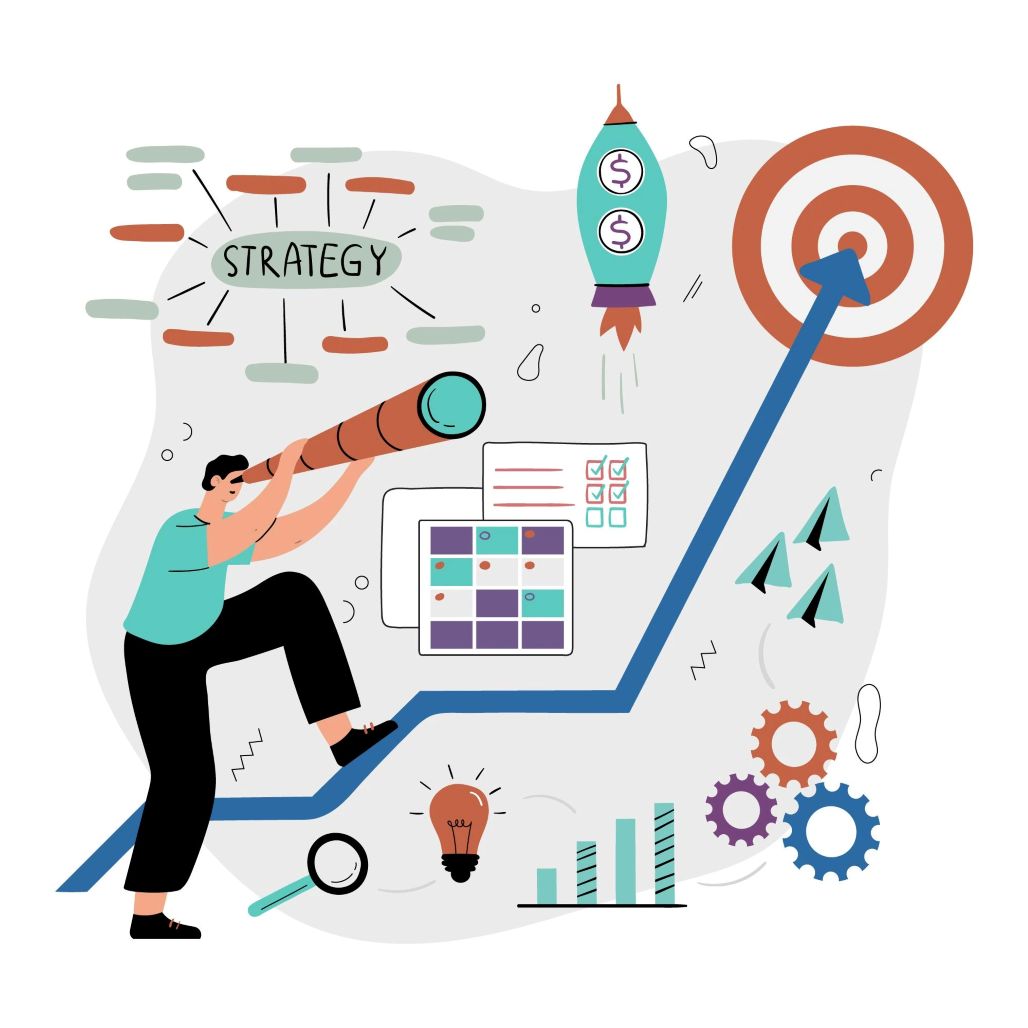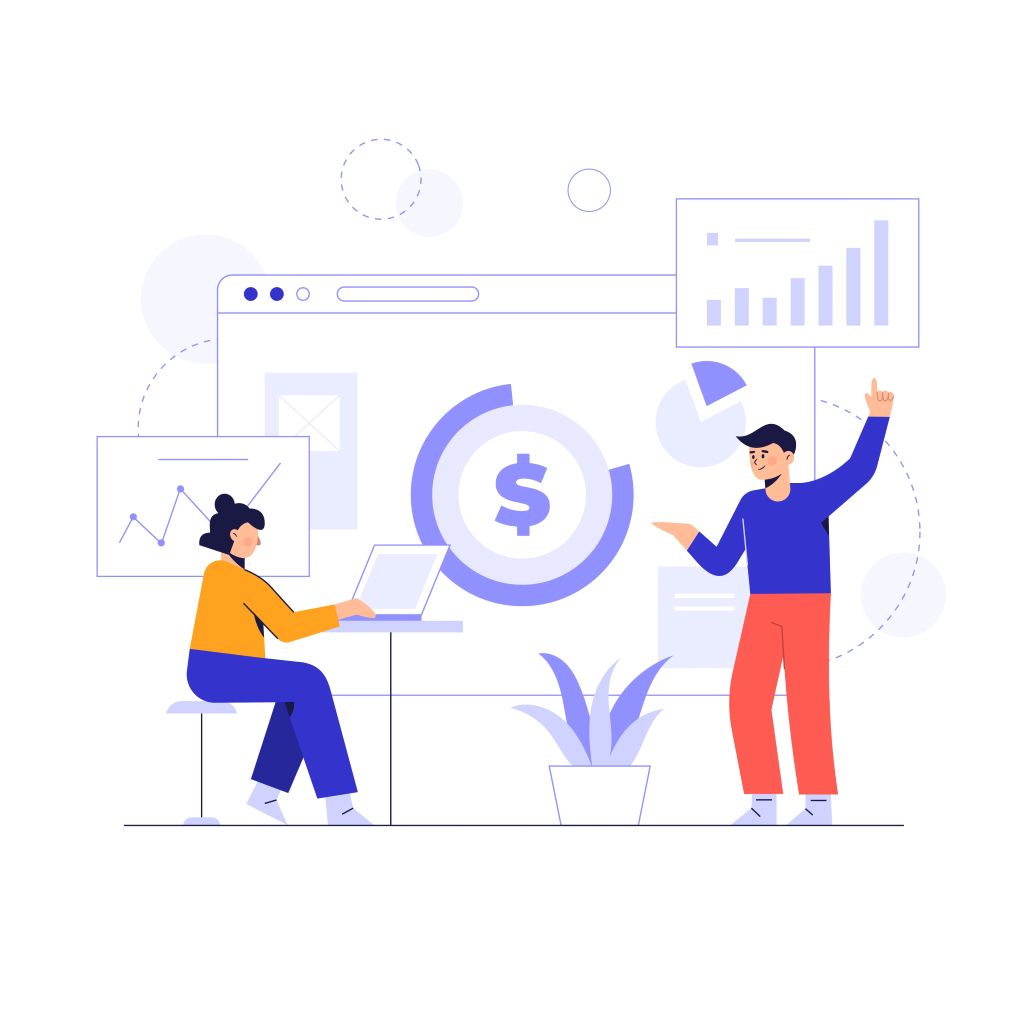Picture this: Your sales team is struggling to hit their quarterly targets. Marketing is cranking out content that nobody uses. Your best reps are spending hours hunting for the right presentation instead of actually selling. Sound familiar?
If you're nodding along, you're not alone. 91% of B2B companies failed to hit their sales quota expectations in 2023, and here's the kicker – much of this failure stems from poor sales enablement. But what exactly is B2B sales enablement, and how can it transform your sales organization from struggling to crushing their goals?
What is B2B Sales Enablement?
B2B sales enablement is the process of supporting a sales team and helping them close more deals — whether that involves equipping them with the right tech stack, providing training resources for internal and external tools, creating a library of content that helps deals progress, or ensuring your reps have everything they need to engage prospects effectively.
Think of it as your sales team's personal concierge service. Instead of wasting time searching for information, creating presentations from scratch, or figuring out which messaging resonates with different buyer personas, your reps get everything served up on a silver platter, precisely when they need it.
But here's where it gets interesting – effective B2B sales enablement isn't just about tools and content. It's about creating a systematic approach that aligns your entire revenue-generating organization around one common goal: helping prospects buy.

The Sales Enablement Ecosystem
Modern b2b sales enablement strategy operates on four core pillars:
Content & Resources: The right materials for every stage of the buyer's journey
Training & Coaching: Continuous skill development and methodology refinement
Technology & Tools: Platforms that streamline workflows and provide insights
Process & Strategy: Frameworks that guide consistent, repeatable success
Why B2B Sales Enablement Matters More Than Ever
Let's talk numbers for a moment. Sales and marketing misalignment costs businesses $1 trillion each year in decreased sales productivity and wasted marketing efforts. That's not a typo – we're talking about a trillion dollars literally going down the drain because teams aren't working in harmony.
But the challenges go deeper than just alignment issues:
The Modern B2B Buying Journey is Complex
Today's B2B buyers are more informed, more cautious, and frankly, more skeptical than ever before. Most of the buyers sometimes prefer not to interact with sales reps when making a B2B purchase. They're doing their homework long before they ever speak to your sales team, which means when they do engage, they expect your reps to be incredibly knowledgeable and prepared.
Sales Cycles Are Getting Longer
B2B sales are becoming increasingly complex. Your sales team needs to be equipped not just to start conversations, but to navigate multi-stakeholder decision processes that can stretch over months. Refining qualification and value communication is essential for conversion success.
Content Overload Without Direction
Many content marketers overlook the needs of the sales team when creating materials. Marketing teams produce content, but it’s often not aligned with what reps need to close deals. The result? Sales reps either ignore the content entirely or waste time sorting through materials that don’t help them sell.
The Core Components of Effective B2B Sales Enablement
1. Sales Enablement Content That Actually Gets Used
The foundation of any successful sales enablement b2b strategy is content that your sales team actually uses. But not all content is created equal. Social media content, market research, reviews, customer testimonials, and product demos are the most effective sales enablement tools for closing deals.
What makes content "sales-ready"?
Stage-specific: Different content for different points in the buyer's journey
Easily customizable: Templates that can be quickly personalized
Outcome-focused: Every piece should move the deal forward
Accessible: Findable within seconds, not minutes
Essential B2B sales enablement content includes:
Battle cards that highlight competitive advantages
Case studies that tell compelling success stories
ROI calculators that quantify value propositions
Objection handling guides for common pushback
Industry-specific pitch decks for different verticals
2. Training and Coaching Programs
Traditional training methods are outdated. Today’s sales reps thrive on programs that are interactive, personalized, and focused on real-world scenarios that drive results.
Modern training programs need to be:
Personalized based on individual rep performance and learning styles
Continuous rather than one-time events
Practical with real-world scenarios and role-playing
Measurable with clear metrics for improvement
Effective sales training requires an LMS for sales training, such as Calibr, that can equip your team with the right skills and tools to boost performance and drive revenue growth.
3. B2B Sales Enablement Tools and Technology
Sales enablement involves equipping sales teams with tools and resources to drive productivity and increase sales effectiveness. Sales enablement tools refer to software platforms and technologies that assist in content management, training, analytics, and more to streamline the sales process.
Key categories of b2b sales enablement tools:
Content Management Systems: Organize and distribute sales materials
Sales Intelligence Platforms: Provide prospect insights and buying signals
Training and Onboarding Tools: Deliver consistent skill development
Analytics and Reporting: Track performance and identify improvement opportunities Communication Tools: Streamline internal collaboration and prospect outreach
4. Process and Strategy Alignment
The most overlooked aspect of sales enablement is process alignment. 74% of businesses using CRM and marketing automation have successfully aligned their Marketing and Sales departments. This alignment is crucial because it ensures everyone is working toward the same goals with consistent messaging and expectations.
Building Your B2B Sales Enablement Strategy

Step 1: Audit Your Current State
Before you can improve, you need to understand where you stand. Conduct a comprehensive audit that examines:
Content inventory: What exists, what gets used, what's outdated
Technology stack: Current tools, integration gaps, user adoption rates
Training programs: Frequency, effectiveness, knowledge retention
Performance metrics: Win rates, sales cycle length, quota attainment
Step 2: Define Your Ideal Customer Profile and Buyer Personas
Your entire sales enablement program should revolve around helping your ideal customers buy. Create detailed personas that include:
Demographics and firmographics
Pain points and challenges
Buying process and decision criteria
Preferred communication channels
Common objections and concerns
Step 3: Map Content to the Buyer's Journey
Implementing a formal enablement methodology is essential for overcoming challenges as it defines several key aspects: Your overall objectives and all stakeholders involved in achieving them. Approach to onboarding and training, including sales methodologies, tools, and required resources.
Create a content map that aligns with each stage:
Awareness Stage: Educational content that identifies problems
Consideration Stage: Solution-focused content that positions your offering
Decision Stage: Proof points and implementation details that close deals
Customer Success Stage: Onboarding and expansion materials
Step 4: Choose the Right B2B Sales Enablement Platform
The technology you choose should support your strategy, not dictate it. Look for platforms that offer:
Intuitive content organization that makes finding materials effortless
Usage analytics that show what content drives results
Integration capabilities with your existing CRM and marketing tools
Mobile accessibility for reps who work remotely or travel frequently
For companies looking to integrate AI-powered course authoring with their sales enablement efforts, Calibr’s AI Course Authoring platform offers innovative solutions that help organizations create engaging training content for both internal teams and customer-facing programs.
Step 5: Implement Measurement and Optimization
Sales teams need to be able to track and analyze their performance in real time, identify areas for improvement, and optimize their sales strategies. Modern sales enablement platforms increasingly incorporate advanced analytics capabilities to support these goals.
Key metrics to track:
Content engagement: Which materials are used most frequently
Sales performance: Win rates, deal size, sales cycle length
Training effectiveness: Knowledge retention, skill application
Technology adoption: User engagement with enablement tools
Current Trends Shaping B2B Marketing Sales Enablement
AI-Powered Personalization
AI-powered personalization is transforming sales enablement. Of all AI-driven content types, videos have proven to be the most effective for engaging both internal teams and external prospects
Artificial intelligence is revolutionizing how we approach sales enablement by:
Automatically personalizing content for different industries and use cases
Suggesting next-best actions based on deal characteristics
Analyzing conversation patterns to identify successful messaging
Creating dynamic content that adapts to prospect behavior
Account-Based Sales Enablement
Rather than generic, one-size-fits-all approaches, modern sales enablement is becoming increasingly account-specific. This means creating customized playbooks, content, and strategies for your most important prospects and customers.
Cross-Functional Collaboration
Sales enablement is widely recognized as critical for driving sales efficiency, yet many organizations struggle to implement it effectively. This gap often stems from poor cross-functional collaboration..
Leading organizations are breaking down silos by:
Creating shared metrics that align sales, marketing, and customer success
Implementing regular feedback loops between content creators and users
Establishing clear ownership for different aspects of the enablement program
Investing in change management to drive adoption across teams
Measuring the ROI of Your Sales Enablement Investment

The best sales enablement programs are those that can clearly demonstrate their impact on business results. Here are the metrics that matter most:
Leading Indicators
Content utilization rates: Are reps actually using the materials you create?
Training completion and retention: How well are reps absorbing new skills?
Technology adoption: Are teams embracing the tools you've provided?
Lagging Indicators
Sales performance improvements: Higher win rates, shorter sales cycles, larger deal sizes
Productivity gains: More time spent selling, less time spent searching
Revenue growth: Ultimately, does enablement drive more revenue?
Common Pitfalls to Avoid
Focusing on Tools Instead of Strategy
Technology is an enabler, not a solution. The fanciest b2b sales enablement platform in the world won't help if you don't have clear processes and quality content to support it.
Creating Content Nobody Wants
Before you create another battle card or case study, ask your sales team what they actually need. Sales enablement platforms boost win rates and sales efficiency. Examples include customer relationship management (CRM) software, content management systems, sales engagement tools, and analytics platforms. These tools help sales teams deliver personalised content, automate outreach, track progress, but only when they're built around real user needs.
Ignoring Change Management
Even the best sales enablement program will fail without proper change management. Involve your team in the planning process, communicate the benefits clearly, and provide ongoing support to drive adoption.
Lack of Executive Buy-in
Sales enablement requires investment in technology, content creation, and ongoing optimization. Without strong executive support, these programs often get deprioritized when budgets get tight.
The Future of B2B Sales Enablement
As we look ahead, several trends are shaping the future of sales enablement:
Hyper-personalization: AI will make it possible to create truly personalized content experiences for every prospect and customer interaction.
Predictive Analytics: Sales teams will have access to predictive insights that help them prioritize opportunities and optimize their approach.
Integrated Experiences: The lines between sales enablement, marketing automation, and customer success will continue to blur as organizations adopt more holistic approaches to revenue generation.
Continuous Learning: Traditional training programs will give way to just-in-time learning experiences that deliver relevant skills and knowledge precisely when needed.
Getting Started: Your Next Steps
Ready to transform your sales organization with effective B2B sales enablement? Here's how to get started:
Assess your current state with a comprehensive audit of content, tools, and processes
Engage your sales team to understand their biggest challenges and needs
Start small with high-impact, low-effort improvements
Measure everything to demonstrate value and identify optimization opportunities
Scale gradually as you prove success and build organizational support
Remember, sales enablement isn't a destination – it's a journey of continuous improvement. The organizations that commit to ongoing optimization and adaptation will be the ones that thrive in an increasingly competitive B2B landscape.
Conclusion
B2B sales enablement has evolved from a nice-to-have to a business-critical capability. In a world where buyers are more informed and sales cycles are more complex, providing your sales team with the right content, tools, training, and processes isn't just helpful – it's essential for survival.
The statistics are clear: organizations that invest in comprehensive sales enablement programs see dramatic improvements in sales performance, productivity, and revenue growth. But success requires more than just buying software or creating content. It demands a strategic, systematic approach that aligns your entire organization around helping customers buy.
The question isn't whether you need sales enablement – it's whether you're ready to commit to doing it right. Your sales team, your customers, and your bottom line will thank you for it.


